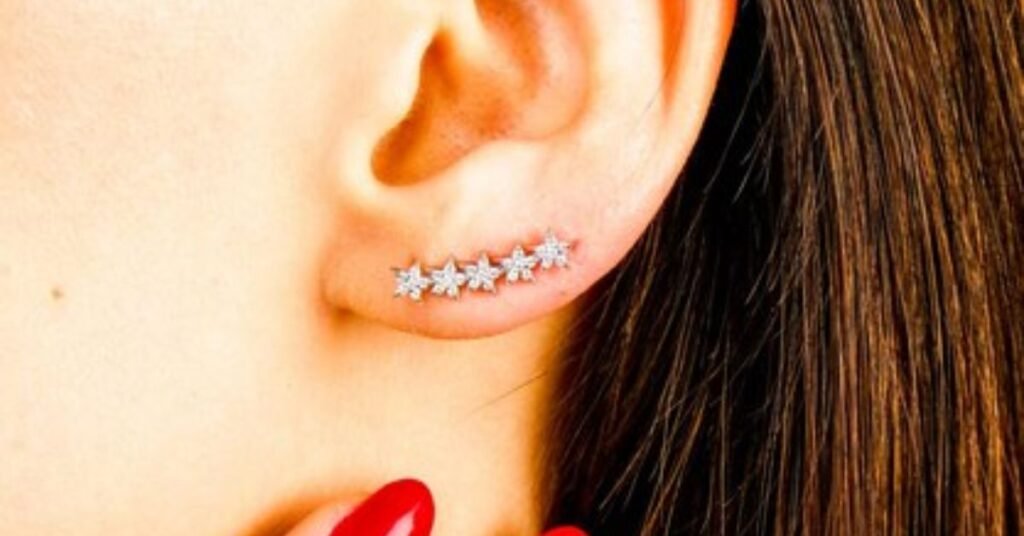Body modification has become a personal expression of style, with piercings being a popular choice. Among the many ear piercings, the forward helix piercing out for its unique placement and aesthetic appeal. Whether you’re a piercing enthusiast or someone considering their first one, understanding this type of piercing is essential. In this article, we’ll explore everything related to forward helix piercings, from what they are to aftercare tips.
What is a Forward Helix Piercing?
A forward helix piercing is located in the outer cartilage of the ear, near the face. It is positioned on the front part of the ear, where the helix meets the head. The forward helix is a fashionable and subtle option that can be customized with different types of jewelry.
The Popularity of Forward Helix Piercings
More and more people are opting for a forward helix piercing due to its discreet yet stylish nature. Celebrities and influencers alike have contributed to its rising popularity by showcasing their unique ear jewelry arrangements.
How is a Forward Helix Piercing Done?
The forward helix piercing procedure is relatively quick and straightforward. It begins with sterilizing the ear and marking the desired location. Afterward, a professional piercer uses a sterilized needle to pierce the cartilage. The process can be completed within minutes, but precision is key to achieving the perfect look.
Pain Level: What to Expect
A common concern when getting a forward helix piercing is the pain level. Since the cartilage is denser than the earlobe, the piercing may cause more discomfort. However, the pain is typically brief and manageable for most individuals. Many describe it as a sharp pinch that lasts only a few seconds.
Healing Time and Aftercare
Healing a forward helix piercing takes longer than lobe piercings due to the cartilage’s structure. On average, it takes around 6 to 9 months for complete healing. Proper aftercare can prevent complications and speed up the process. Clean the area twice daily with a saline solution and avoid touching the piercing with dirty hands.
Common Aftercare Mistakes to Avoid
Many people make mistakes during the healing process that can lead to infections or delayed healing. One mistake is failing to clean the piercing regularly, which can result in bacteria buildup. Another is changing the jewelry too soon, disrupting the healing process and causing irritation.
Jewelry Options for Forward Helix Piercings
Choosing the right jewelry for a forward helix piercing enhances the look and complements your style. Popular options include studs, hoops, and barbells, all of which come in different materials such as titanium, gold, and stainless steel. Initial jewelry should be simple to avoid putting unnecessary stress on the fresh piercing.
Double and Triple Forward Helix Piercings
For those wanting to make a statement, double or triple forward helix piercings provide a striking visual effect. This involves multiple piercings in the forward helix area, allowing for creative jewelry combinations. It’s best to get them done one at a time to allow proper healing.
Forward Helix Piercing Cost
The cost of a forward helix piercing can vary depending on location and the piercing studio. On average, prices range from $30 to $80. Additional costs may apply for high-quality jewelry or aftercare products. Researching a reputable piercer is crucial to avoid complications.
Choosing a Professional Piercer
Getting a forward helix piercing from a licensed, experienced piercer reduces the risk of infection and ensures a clean procedure. It’s important to verify that the piercer uses sterilized equipment and has a solid reputation in the industry.
What to Look For in a Piercing Studio
A clean and professional environment is essential when selecting a studio for your forward helix piercing. The piercer should use single-use needles and provide detailed aftercare instructions. Reading reviews and checking the studio’s certifications can also give you peace of mind.
Risks Associated with Forward Helix Piercing
Like all body modifications, forward helix piercings come with risks, including infection, rejection, and scarring. Signs of infection include redness, swelling, and discharge. If you notice any of these symptoms, consult your piercer or a healthcare professional immediately. Following aftercare guidelines can help minimize these risks.
How to Manage Piercing Bumps
Piercing bumps are a common issue that can occur during the healing process. They are small, raised areas of tissue that form around the piercing site. These bumps may result from irritation, improper aftercare, or trauma to the piercing. Using a saline soak and avoiding excessive touching can help reduce piercing bumps.
Forward Helix Piercing and Sleep
Sleeping on a fresh forward helix piercing can slow the healing process and cause discomfort. To avoid irritation, sleep on the opposite side or use a travel pillow to keep pressure off the piercing. It’s important to avoid tugging or snagging the jewelry during sleep, as this can cause complications.
When Can You Change Your Forward Helix Jewelry?
Changing forward helix jewelry should only be done after the piercing has fully healed, which typically takes six months. Prematurely changing jewelry can irritate the piercing and prolong healing. Always consult with your piercer before making any jewelry changes.
Signs Your Piercing is Infected
An infected forward helix piercing may present with symptoms like redness, swelling, or pus. In some cases, the area may feel warm to the touch. If you notice these signs, cleaning the piercing and seeking professional advice is essential to prevent further complications.
How to Remove Forward Helix Jewelry
Removing forward helix jewelry can be challenging due to the tight space and small size of the piercing. It’s best to have a professional change or remove the jewelry to avoid damaging the piercing. If you do it at home, ensure your hands and the jewelry are clean.
Can Forward Helix Piercings Close?
Forward helix piercings can close if jewelry is removed before the healing process is complete. Even after the piercing has healed, leaving the jewelry out for extended periods may cause the hole to close. If you want to keep your piercing, it’s important to always wear jewelry in it.
Forward Helix Piercing and Other Ear Piercings
The forward helix can complement other ear piercings, creating a unique and cohesive look. Many people pair their forward helix with piercings like the tragus, daith, or lobe piercings to create an eye-catching ear stack. Experimenting with different combinations allows you to express your individual style.
Jewelry Material Considerations
Selecting the right jewelry material for your forward helix piercing is crucial to avoid allergic reactions or irritation. Hypoallergenic materials like titanium or surgical steel are safe choices for initial piercings. If you prefer gold, opt for 14k or 18k gold to prevent tarnishing and ensure durability.
The Role of Ear Anatomy
Not everyone’s ear anatomy supports a forward helix piercing. Some individuals may have too little cartilage in that area, making the piercing more difficult. A professional piercer can assess your ear’s anatomy and determine whether you’re a good candidate for the piercing.
Forward Helix Piercing Trends
The forward helix piercing has become a trendy choice in the world of body art. Minimalistic jewelry styles are particularly popular, as they offer a subtle and sophisticated look. Rose gold, gemstones, and dainty hoops are some of the top trends people are incorporating into their forward helix piercings.
Conclusion
The forward helix piercing offers a stylish way to personalize your look. Its unique placement, combined with various jewelry options, makes it a versatile choice for many. With proper aftercare and the right piercer, this piercing can heal well and be a stunning addition to your collection. Remember to follow professional advice to avoid complications and enjoy your new piercing to the fullest.
FAQs
1. How painful is a forward helix piercing compared to other piercings?
A forward helix piercing is more painful than lobe piercings due to the dense cartilage, but it’s brief.
2. Can you sleep on a forward helix piercing?
It’s recommended to avoid sleeping on the forward helix piercing during healing to prevent irritation.
3. What type of jewelry is best for a forward piercing?
Studs and small hoops are ideal for forward helix piercings, offering both comfort and style.
4. How long does it take for a forward piercing to heal?
On average, it takes between 6 to 9 months for a forward helix piercing to fully heal.
5. Can I get multiple forward piercing at once?
Multiple piercings are possible, but many professionals recommend doing one at a time for easier healing.



